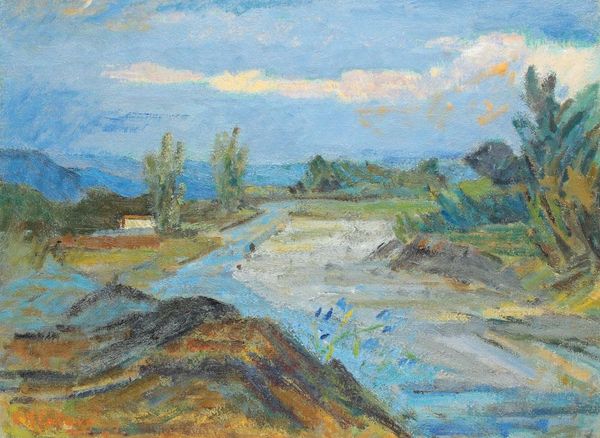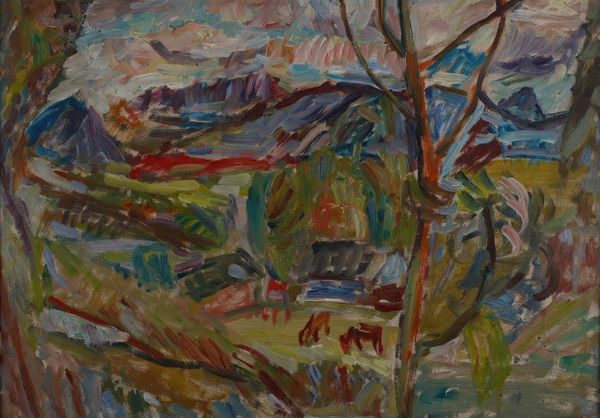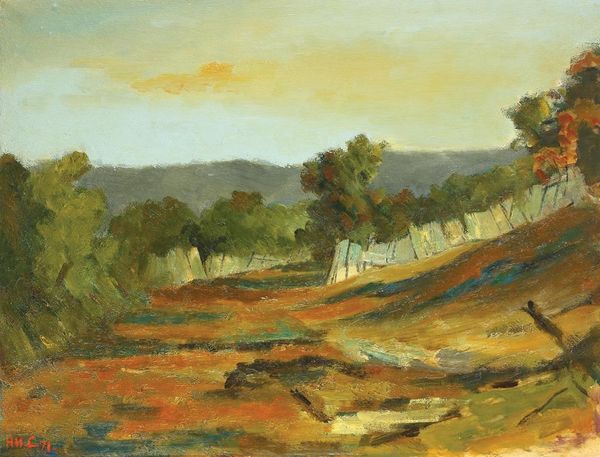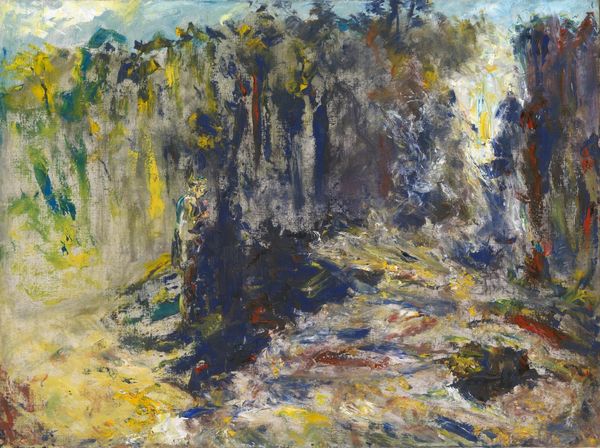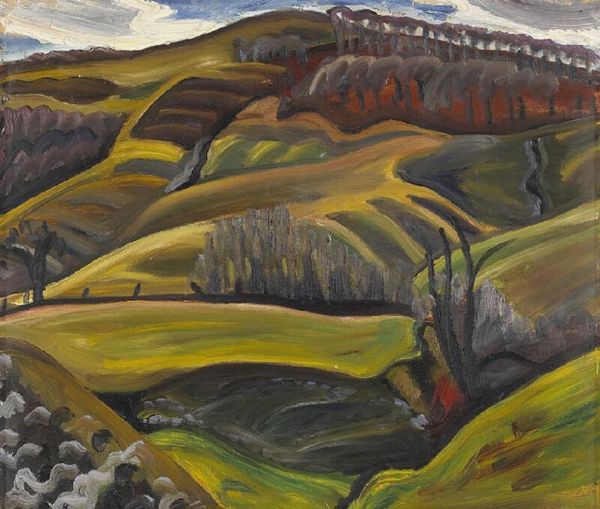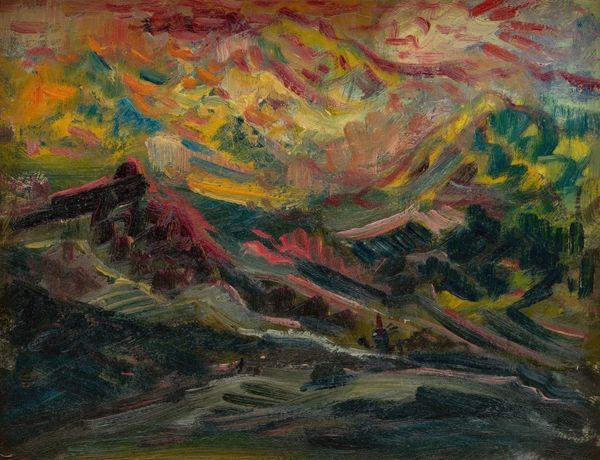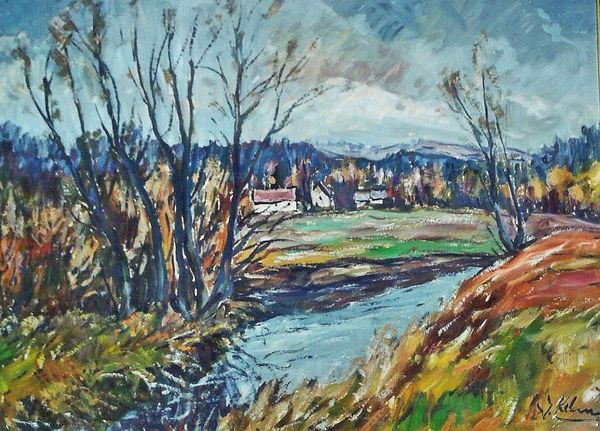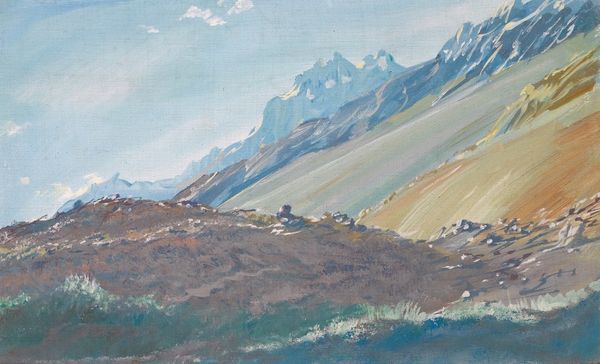
painting, plein-air, oil-paint
#
painting
#
impressionism
#
plein-air
#
oil-paint
#
landscape
#
impressionist landscape
#
nature
#
oil painting
#
romanticism
Copyright: Barrington Watson,Fair Use
Curator: Let's turn our attention to this oil painting titled "Yallahs River #2" by Barrington Watson. It captures a sprawling landscape. Editor: It strikes me immediately as somber, yet luminous. The tonal variations create depth, almost pulling you into the receding hills. There is an interesting juxtaposition of darkness in the foreground, transitioning toward softer, ethereal colors on the horizon line. Curator: Yes, and I think this encapsulates much of Watson’s artistic concern – a deep engagement with plein-air painting and an exploration into the relationship between labor, material and land in post-colonial Jamaica. We know, for instance, that he produced a number of works depicting laborers at work on sugar cane plantations. Editor: Indeed. The romantic style lends itself to such an interpretation. However, even divorced from the specifics of subject matter, the very brushstrokes themselves express a type of industrious labor, don't they? They feel rapid, practical almost. Notice how each stroke constructs the larger form with almost a formulaic rhythm? Curator: Absolutely. And his commitment to painting en plein air is essential, positioning his process very deliberately within specific geographic and socioeconomic realities, specifically local production. The physical act of painting becomes intertwined with the environment, reflecting his connection to Jamaican identity. The painting materials themselves are also significant here. The commodification of pigments and canvases and the social position and possible colonial associations behind these materials, add nuance. Editor: I see what you mean; you see the choice of the medium itself and even the style as imbued with social awareness. It’s an intriguing interpretation, considering how we perceive romanticism. To me, there’s a powerful compositional aspect at play here too. How Watson uses those layers and planes, directing the viewer’s eye. It isn’t simply representational; there's deliberate construction. Curator: So, while you see the aesthetic structure... Editor: It is inseparable to me! It dictates the impression we gather in the first place. Curator: And for me, that structure is determined by production—social factors always in play. But yes, undeniably arresting use of tonal contrast, and an economy of mark-making to depict form. Editor: Exactly, the aesthetic form working with cultural relevance creates an interesting synthesis here. Curator: It certainly is, something to keep in mind when considering Watson's position within the history of Jamaican art.
Comments
No comments
Be the first to comment and join the conversation on the ultimate creative platform.

